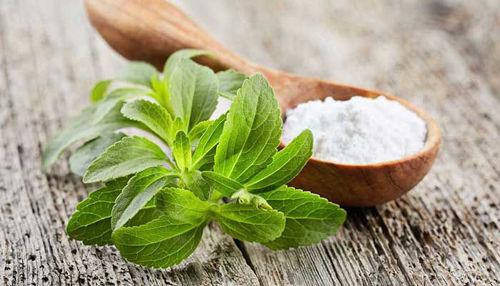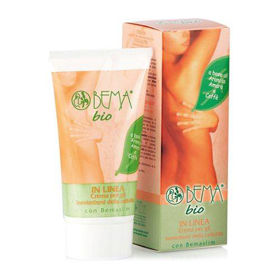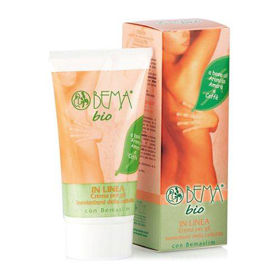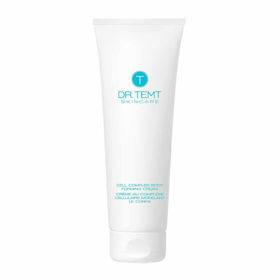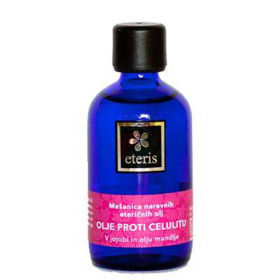Cellulite is a prevalent, harmless skin condition that causes lumpy-orange skin on the thighs, hips, buttocks, and abdomen. The condition is most prevalent in women. Between 80 and 90% of women will face cellulite at some point.
Cellulite: General | Causes | Cellulite elimination | Professional Treatments | Home Treatments | Questions and Answers | Sources/references
Many people try to improve the appearance of their skin through weight loss, exercise, massage, and creams marketed as a solution to cellulite. Medically proven treatment options are also available, although the results are not as immediate or long-lasting as many women would like.
Cellulite can be classified into the following levels depending on the severity:
- Level 0: no pressure indentations
- Level 1: Indentation when pressure is applied
Image: people who consume too much fat, carbohydrates, and salt and too little fiber are more likely to develop cellulite.

- Stage 2: Visible indentation when standing but not when lying down
- Stage 3: Visible indentation when standing and lying down
What causes cellulite?
The exact cause of cellulite is unknown, but it appears to be the result of an interaction between the connective tissue in the skin layer beneath the skin surface and the layer of fat that lies just below it. In women, this layer's fat cells and connective tissue are arranged vertically.
Video content: what causes cellulite?

If fat cells protrude into the skin layer, this gives the appearance of cellulite. In men, the tissue has a crisscross structure, which may explain why men are less likely to have cellulite. Some factors could contribute to the formation of cellulite, which you can read about in the following lines.
Hormonal factors and age
Hormones probably play an essential role in the development of cellulite. Estrogen, insulin, norepinephrine, thyroid hormones, and prolactin are all part of the cellulite formation process. One theory is that when estrogen decreases in women during menopause, blood flow to the connective tissue under the skin also decreases.
Less intense circulation means less oxygen, which results in less collagen production. Fat cells also increase in size as estrogen levels drop. Together, these factors make fatty deposits more visible.
Image: fat cells increase as estrogen levels drop.
.jpg)
The well-known dimpling effect occurs when the fat under the skin protrudes through the weakened connective tissue. Age also causes the skin to become less elastic, thinner, and more likely to sag. All of the above increases the possibility of cellulite.
Genetic factors
Specific genes are required for the development of cellulite. For example, the HIF1A and ACE genes are associated with the risk of cellulite. In addition, genetic factors can be related to a person's metabolic rate, fat distribution under the skin, ethnicity, and the intensity of blood circulation.
Diet and lifestyle
People who consume too much fat, carbohydrates, and salt and too little fiber are more likely to develop cellulite. Cellulite can also be more common in smokers, those who do not exercise, and those who sit or stand in one position for long periods.
Wearing underwear with tight elastic can restrict blood flow, contributing to cellulite. Cellulite is more common in people with excess fat but can also occur in thin people. It is more likely to occur after age 25, but it can also affect younger people, including teenagers.
What eliminates cellulite?
Combining exercise, diet, and treatments can help reduce the appearance of cellulite. If you want to lose weight or shape your body, a balanced diet and regular exercise can also help reduce visible cellulite. In many people, the celllit stands out more due to weight gain.
Image: A balanced diet and regular exercise can help reduce cellulite.

However, for some people, weight loss often results in looser skin. This is especially true for rapid or extreme weight loss. This loose skin can make cellulite stand out even more, just as it does with loose skin from aging.
Collagen is also an essential part of healthy tissues. It is one of the two proteins that make up connective tissues and makes up as much as 75% of the dry weight of your skin. Your body produces collagen, but it produces about 1% less each year as you age. Collagen supplements can compensate for this type of deficiency and consequently improve the skin's and cellulite's appearance.
Consequences of a reduced amount of collagen:
- harder connective tissues
- wrinkled skin
- smaller and weaker muscles
- joint pain due to cartilage loss
Video Content: Can Collagen Peptides Help Reduce Cellulite?

Massage is considered to be a promising "cure" against cellulite. You can do this at home or with the help of a professional massage therapist. Massage can reduce the appearance of cellulite by improving lymphatic drainage, and it also helps stretch the skin tissue.
Professional cellulite reduction treatments
If you're not ready to make any lifestyle changes to get rid of cellulite, you can check out several treatments. A doctor or dermatologist can perform the following medical procedures, and your doctor can help you determine which treatment or treatment is best for you.
1. Cryolipolysis
Cryolipolysis or CoolSculpting is a non-invasive procedure that removes cellulite by freezing fat cells under the skin.
Image: A precisely controlled cooling method - CoolSculpting - was developed by scientists and doctors from Harvard.
.jpg)
This causes the structure of the fat cells to break down and their contents to be absorbed by the body. Several treatments are required to dissolve a centimeter of fat tissue. It may take three to four months to reduce the visibility of cellulite noticeably.
2. Ultrasound
Ultrasound is a non-invasive procedure that uses sound waves to target and eliminate fat in the abdominal and thigh areas. Results last two or three months. It is recommended to combine ultrasound with another cellulite treatment.
3. Cellfina
Cellfina is a non-surgical procedure during which a needle is used to break up heavy cellulite bands under the skin - this way, you can get rid of cellulite on the thighs and buttocks. Results can be seen in three days and last up to three years.
4. Acoustic wave therapy
This treatment works by vibrating the connective tissue in body areas with more cellulite. This helps stimulate and increase collagen production, improving the skin's appearance, texture, and elasticity. However, several treatments are required for results.
5. Laser and radiofrequency treatment
These medical therapies use tissue massage with combinations of radio frequency technology, infrared light, and diode laser energy to treat and remove cellulite.
Video content: Cellfina is a non-surgical procedure using which a needle breaks up heavy cellulite bands under the skin.

Cellulase is one type of laser treatment that breaks up hard cellulite patches under the skin that make cellulite noticeable. Improvements are visible after a series of treatments and can last six months or longer.
6. Vacuum release of tissue
This procedure breaks up complex folds under the skin using a device with small blades. The process cuts the fold strips, allowing the tissue to move up to fill the dimpled skin. Results can last up to three years.
7. Carboxytherapy
The technician inserts carbon dioxide just below the skin's surface during this procedure. This is said to increase blood flow to the area, which often helps reduce the appearance of cellulite. However, you may experience discomfort and temporary bruising. You may see results after 7 to 10 treatments.
8. Microdermabrasion
This treatment uses aluminum oxide or salt crystals to exfoliate and smooth the skin. These tiny particles gently exfoliate aging skin and stimulate the growth of new skin cells. It can also be used on the face, neck, chest, back, and hands. You will need more treatments.
9. Endermology
Endermology is a spa treatment where a deep massage is performed while the skin is lifted with a vacuum tool. You will need several treatments for results, lasting up to 12 months. Some bruising may also occur.
Home treatments to reduce the visibility of cellulite
Several popular home remedies are used to get rid of cellulite.
Image: Dry brushing helps detoxify your skin by improving blood circulation.
.jpg)
These home remedies can be part of a routine and self-care routine that involves improving your lifestyle and exercise habits.
Dry brushing
This technique is supposed to stimulate blood and lymph flow, remove dead skin cells and stimulate the growth of new cells. Use a natural herbal loofah or body brush to smooth away dry skin gently - apply the treatment for up to five minutes, and it can be repeated several times a day. Start at the feet and work your way up. Use long strokes and nice circular motions. Dry brushing is best done before a bath or shower.
Coffee scrub
Using coffee as an exfoliant is a popular way to remove dead skin cells, stimulate new cell growth, and tighten the skin. You can use coffee alone or mix it with coconut, olive oil, or sugar.
Image: You can use coffee alone or mix it with coconut, olive, or sugar.

Gently rub the ground and moisten coffee on the affected area for a few minutes. Leave the coffee scrub on the skin for 10 minutes before washing it off thoroughly.
Apple Cider Vinegar
Drinking apple cider vinegar can help you lose weight. Drink one tablespoon of diluted apple cider vinegar three times a day, or use a solution of equal parts apple cider vinegar and water and apply it to your skin.
Questions and answers
What causes cellulite?
Unfortunately, the exact cause of cellulite is unknown. Still, it appears to result from an interaction between the connective tissue in the skin layer that lies beneath the surface of the skin and the layer of fat that lies just below it. Factors contributing to cellulite accumulation are age, genetics, smoking, diet, excessive salt intake, and activity level [1].
Which treatments can help eliminate cellulite?
A doctor or dermatologist can perform the following medical procedures:
- cryo-lipolysis
- ultrasound
- cellfina
- acoustic wave therapy
- laser and radiofrequency treatment
- vacuum release of tissue
- carboxytherapy
- microdermabrasion
- endermology[2]
Image: Your doctor can help you determine which treatment or treatment is best for getting rid of cellulite.

Can losing weight eliminate cellulite?
Losing weight can make cellulite less visible, but unfortunately, it won't disappear completely. For some people, losing weight can cause looser skin. This is especially true for rapid or extreme weight loss. This loose skin can make cellulite stand out even more, just as it does with loose skin from aging[3].
Sources and references
1. Everything you need to know about cellulite - https://www.medicalnewstoday.com
2. What Is Cellulite and How Can You Treat It? - https://www.healthline.com
3. What You Need To Know About The Connection Between Cellulite And Weight Loss - https://www.womenshealthmag.com






